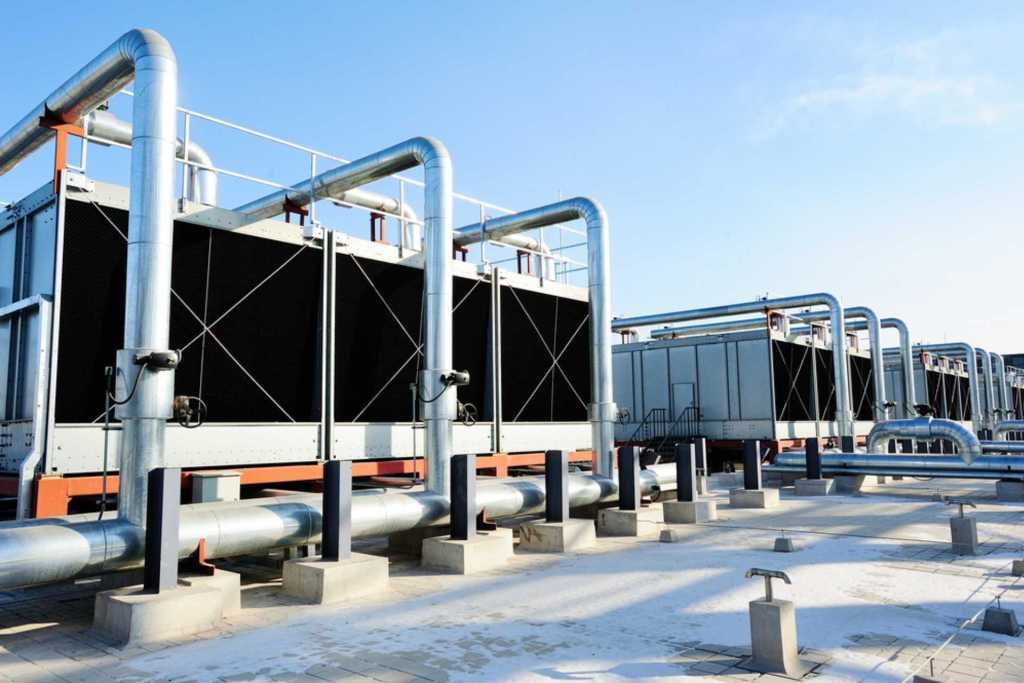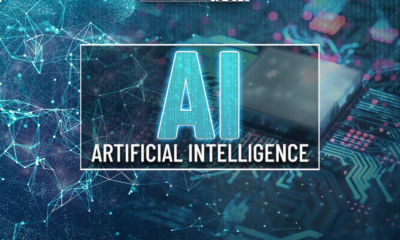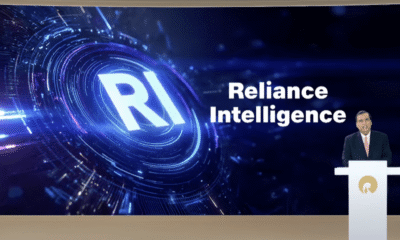Tools & Platforms
Big Tech is betting billions on AI — but can climate promises keep up?

Photo credit: WaitForLight / Shutterstock
Artificial intelligence is sparking a once-in-a-generation economic opportunity. Amazon, Microsoft, Google, and Meta are together projected to invest more than $300 billion in AI and data center infrastructure in 2025, and AI is expected to add more than $15 trillion to the global economy by 2030.
And federal pressure to build even bigger is mounting as well. In July, President Trump issued a sweeping executive order aimed at streamlining data center construction and permitting. With new government-backed support and an increasing commitment to AI growth, the industry now faces a critical question: “Can its climate commitments withstand this breakneck pace?”
A cynical narrative has emerged that chasing AI’s promise means abandoning decarbonization. Recent trends give some credence to this view. Google’s emissions jumped 48% from 2019 to 2023 and Microsoft’s emissions rose 30% since 2019 due to AI-supported data center expansion. Amazon’s emissions also increased in 2024, partially driven by new data center construction.
The reality, however, is more nuanced. Near-term emissions are increasing, but leading hyperscalers are doubling down on clean energy and decarbonization, simply because their AI ambitions depend on it.
Scaling AI means securing enormous amounts of electricity, fuels, and materials for construction. Achieving these goals sustainably — meaning zeroing on renewables, clean fuels, and low-carbon alternatives — allows companies to comply with regulations, serve long-term customer expectations, and meet investor scrutiny across jurisdictions.
A modest cost for a massive need
The cost of achieving clean energy goals is modest relative to hyperscaler profitability. Goldman Sachs analysts calculated a “green reliability premium,” approximating that “data center developers are willing to pay a $40 per megawatt-hour green premium above the cost of natural gas for low carbon power.” According to Goldman Sachs, this premium would have a limited impact on the hyperscalers profitability.
According to Carbon Direct’s base case, total U.S. data center demand is projected to increase from roughly 25 gigawatts in 2024 to 120 GW in 2030, which could make data centers a double-digit percentage of national electricity demand. Meeting this need sustainably will require an “all-of-the-above” strategy for clean firm power and low-carbon material, plus increased procurement of carbon dioxide removal credits.
Several hyperscalers have already announced procurement deals with zero-emissions energy. Google and Amazon have invested in next-generation small modular reactors to power future data centers and Meta is seeking nuclear energy developers to supply its AI data centers.
A recent Carbon Direct white paper found that new gas-fired generators outfitted with CCS could supply up to 63% of U.S. data center electricity by 2030 while keeping net emissions low. The levelized cost of power from natural gas with CCS would be between $70 and $100 per megawatt. This pathway is appealing to hyperscalers because speed to market and infrastructure accessibility are critical components for AI scale-up. CCS deployment is not a silver bullet, but its adoption reflects hyperscalers’ willingness to embrace pragmatic, scalable solutions for clean firm power.
Clean electricity alone is not enough. Data center construction relies heavily on steel, cement, and other industrial materials from hard-to-decarbonize sectors. Environmental attribute credits have promise, but with current technologies, the complete elimination of carbon across these supply chains by 2030 is not feasible.
As Microsoft’s energy innovation lead Brian Marrs noted in an interview with Latitude Media earlier this year, “we may need carbon removal to backstop 2030 net-zero targets across our industry, because it will be very difficult to fully decarbonize the entire supply chain over that time period.” Microsoft, the world’s largest buyer of carbon removal, has rapidly scaled its portfolio of carbon removal purchases, and Google also increased its purchases of carbon removal by 14-fold from 2023 to 2024.
The mandate for sustainability
While hyperscalers are mainly headquartered in the U.S., they operate globally and are under increasing scrutiny from governments and investors worldwide. And state-level directives are also key to how they do business. So, despite recent federal headwinds for U.S. climate initiatives, Big Tech cannot afford to ease off on decarbonization.
The European Union’s 2024 Corporate Sustainability Reporting Directive compels thousands of multinationals to measure and report detailed sustainability metrics. California’s new laws require companies to publicly disclose their full greenhouse gas emissions data and reduction plans by 2026. Meanwhile, in the private sector, asset managers are also increasingly focused on both corporate climate reporting and performance, as well as their exposure to climate-related risk. Transparent reporting on climate performance is becoming a baseline expectation for business.
The tech companies driving the future of AI increasingly understand that their social license to operate depends on trust. Speaking about his industry as a whole, Microsoft CEO Satya Nadella said, “I don’t think the world will put up anymore with any of us coming up with something that has not thought through safety, trust, [and] equity.”
The tension between explosive AI growth and decarbonisation is real, but it’s not a zero-sum tradeoff. The largest technology companies can and must continue to expand their AI capabilities at breakneck speed — while adhering to the climate goals they’ve set. Hyperscalers that scale AI responsibly — by balancing innovation with sustainability — will define the next era of the digital economy.
Jon Goldberg is the founder and CEO of Carbon Direct. The opinions represented in this contributed article are solely those of the author, and do not reflect the views of Latitude Media or any of its staff.
Tools & Platforms
Oak Lawn Community High School to implement AI gun detection tech – NBC Chicago

A high school in suburban Chicago was awarded a grant to implement AI-powered gun detection technology.
Oak Lawn Community High School District 229 was one of 50 recipients selected nationwide for the Omnilert Secure Schools Grant Program, the school said in a recent announcement.
The district was awarded a three-year license for Omnilert Gun Detect, an “advanced AI-powered gun detection technology” — at no cost.
The AI system identifies firearms “in real-time through existing security camera infrastructure,” the announcement said.
Once a potential threat is identified, the AI system activates a rapid response process by alerting school officials and law enforcement, ultimately ensuring that threats can be addressed “as quickly and effectively as possible,” the announcement said.
The implementation of the AI system aligns with District 229’s security strategy, that includes a combination of physical safety measures, emergency preparedness and mental health resources, the announcement said.
The school said staff training and safety drills will be done to ensure the technology is used effectively and responsibly.
Tools & Platforms
Your browser is not supported
usatoday.com wants to ensure the best experience for all of our readers, so we built our site to take advantage of the latest technology, making it faster and easier to use.
Unfortunately, your browser is not supported. Please download one of these browsers for the best experience on usatoday.com
Tools & Platforms
iShares Future AI & Tech ETF (NYSEARCA:ARTY) Surges 27.6% in 2025 — Is It a Buy?

ARTY delivers strong tech exposure with 83% allocation to AI leaders, but volatility and valuations test investor conviction | That’s TradingNEWS
8/30/2025 8:54:36 PM
-
Tools & Platforms3 weeks ago
Building Trust in Military AI Starts with Opening the Black Box – War on the Rocks
-

 Ethics & Policy1 month ago
Ethics & Policy1 month agoSDAIA Supports Saudi Arabia’s Leadership in Shaping Global AI Ethics, Policy, and Research – وكالة الأنباء السعودية
-

 Events & Conferences3 months ago
Events & Conferences3 months agoJourney to 1000 models: Scaling Instagram’s recommendation system
-

 Jobs & Careers2 months ago
Jobs & Careers2 months agoMumbai-based Perplexity Alternative Has 60k+ Users Without Funding
-

 Business1 day ago
Business1 day agoThe Guardian view on Trump and the Fed: independence is no substitute for accountability | Editorial
-

 Funding & Business2 months ago
Funding & Business2 months agoKayak and Expedia race to build AI travel agents that turn social posts into itineraries
-

 Education2 months ago
Education2 months agoVEX Robotics launches AI-powered classroom robotics system
-

 Podcasts & Talks2 months ago
Podcasts & Talks2 months agoHappy 4th of July! 🎆 Made with Veo 3 in Gemini
-

 Podcasts & Talks2 months ago
Podcasts & Talks2 months agoOpenAI 🤝 @teamganassi
-

 Jobs & Careers2 months ago
Jobs & Careers2 months agoAstrophel Aerospace Raises ₹6.84 Crore to Build Reusable Launch Vehicle





















